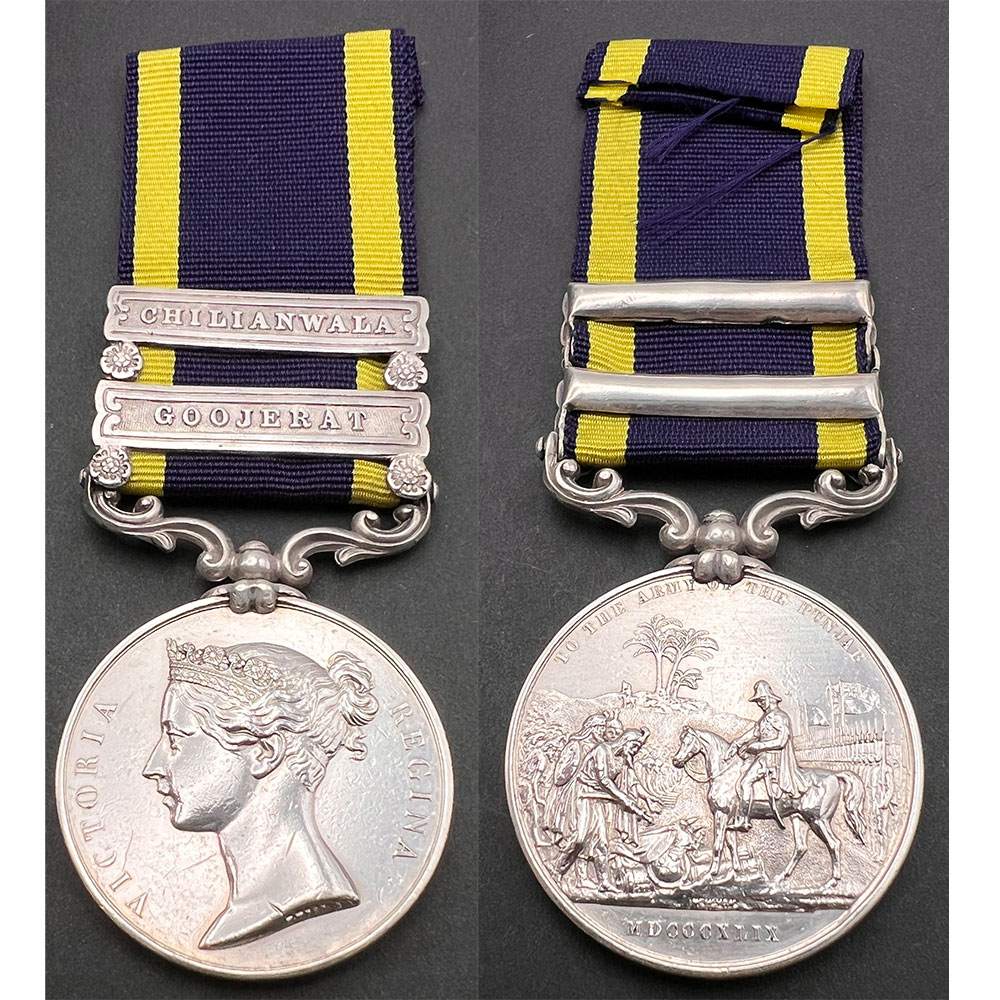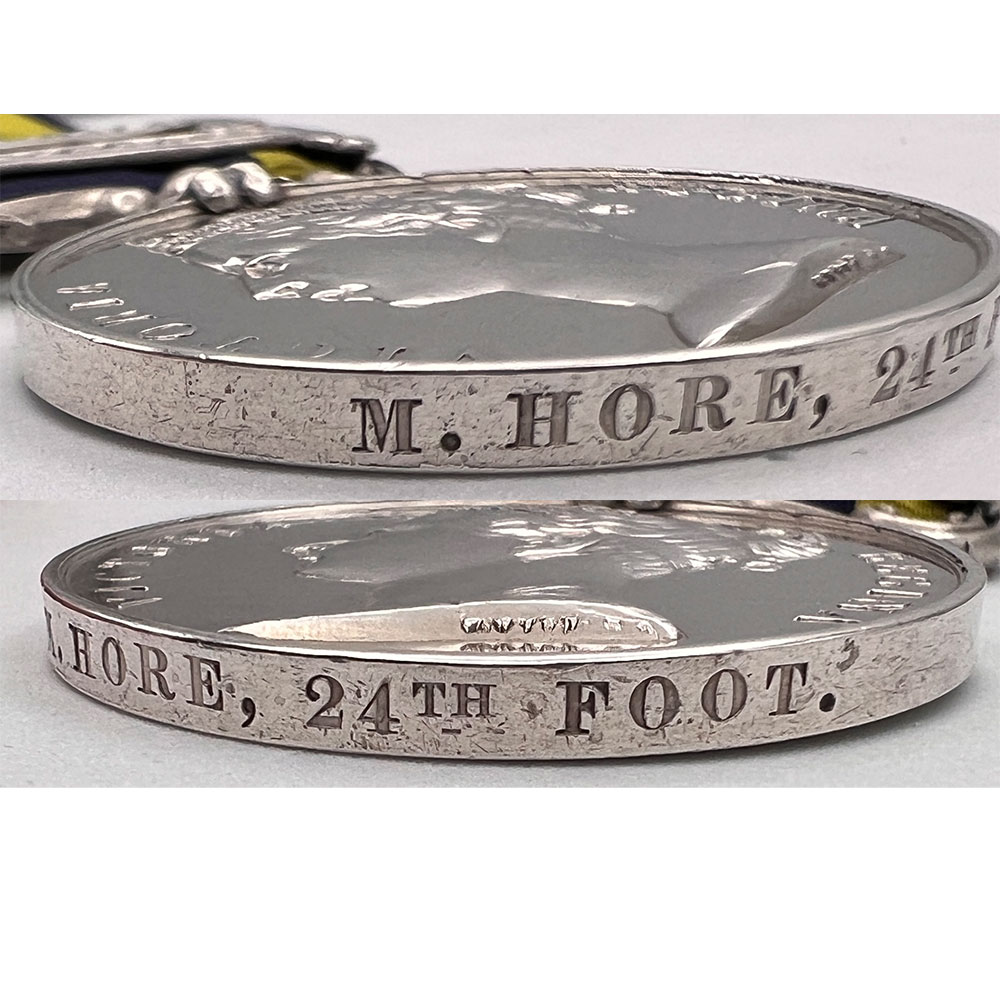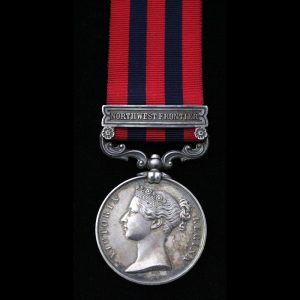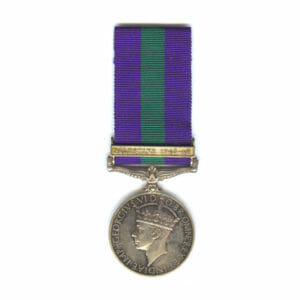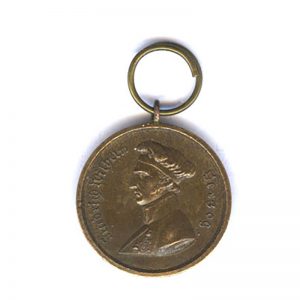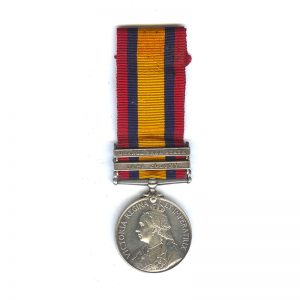Description
Punjab Medal, 2 bars, Goojerat, Chilianwala, Private Michael Hore, 24th Regiment of Foot.
Officially impressed: “M. Hore, 24th Foot.”
Confirmed on the medal roll, which recalls entitlement to the Medal and both clasps.
The roll has him marked down for “Chilianwalah” “Goojrat” and “Employed during the Campaign on the Punjaub to the date of occuaption of Peshawar.”
Good condition example for this medal.
During the Anglo-Sikh War, at the Battle of Chillianwala, the 24th Foot arrived upon the enemy prematurely but, under instructions not to fire, they fixed bayonets and made a gallant charge against the deadly enemy artillery.
In this “gallant but foolhardy attack” the regiment would suffer 515 casualties including 238 men killed.
The National Army Museum holds an excellent colour lithograph from a drawing done by Lieut J H Archer, 96th Regiment of Foot, who was present at the action, of the 24th foot making their famous charge “through jungle and water”.
“Coloured lithograph by Day and Son after E Walker from a drawing on the spot by Lieutenant J H Archer, 96th Regiment. Published by R Ackermann, 1849 (c).
On 13 January 1849, near the village of Chilianwala, north-west of Lahore, General Lord Hugh Gough, Commander-in-Chief India, led his army into the first major battle of the 2nd Sikh War (1848-1849). The 24th (The 2nd Warwickshire) Regiment of Foot and the 25th and 45th Regiments of Bengal Native Infantry advanced to attack the guns of the Sikh Army. Outstripping the native infantry, the 24th Regiment arrived upon the enemy prematurely but, under instructions not to fire, they fixed bayonets and charged the deadly artillery. In this gallant but foolhardy attack, the regiment suffered 515 casualties including 238 killed.
The battle almost ended in disaster when Lieutenant-Colonel Alexander Pope, commanding the 2nd Cavalry Brigade, gave an indistinct instruction which was interpreted as ordering a retreat: the brigade’s flight was just halted by an Army chaplain. The enormous casualties which were inflicted on a larger and better-equipped force changed Indian perceptions of the invincibility of the British. However, the Sikh Army failed to drive home their advantage, so Gough claimed the battle as his victory.”
Michael Hore, can be found serving with the 24th Foot as early as 1841, holding the service number 1711.
In 1841, he was stationed with the regiment in Kingston, Canada.
Following the Anglo-Sikh “Punjab” War of 1848-49, where he saw signficant field service including the Battles of Goojerat and Chilianwala, he was then noted on the 1851 Army Census, stationed with the 24th at Wazirabad, Pakistan.
